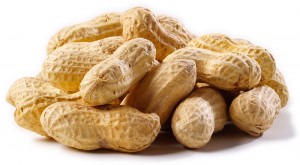By Richard S. Roberts, MD
Carolina Asthma & Allergy Center

Did you know that peanut allergy affects about 1.2% of all children, but up to 20% of children with eczema?
Peanuts are legumes. They are related to pears, beans and soy but only five percent of peanut allergic people also react to other legumes, even if there is a positive allergy test to those other legumes.
It is the protein of the peanut that causes the allergy, not the fat. Peanut oil is fat. The amount of peanut protein contaminating the fat is very small for most refined peanut oils that are used for cooking. Problems from these refined oils are unusual.
Allergy skin test and blood tests (Immuno-CAP) are both good tests for identifying peanut sensitization which may or may not translate to reactions when peanuts are eaten.
The height of the positive peanut test score does not predict the severity of peanut reactions, in both directions. It is possible to react to peanut even if peanut test scores are negative. Allergy antibody to peanut may still be present, just at a level below what is detectable by current test methods. Incremental oral challenges performed by a board certified allergist can identify such patients.
Peanut (and other foods) reactions occur quickly, usually within minutes, but on rare occasions an hour or two after the ingestion. Symptoms resolve within a day or less. A prior mild reaction does not predict a mild reaction next time — it may or may not get worse.
Things you should know:
– About 4.5% of package of baking mixes, candies, cookies, salty snacks, cold cereal, pasta and pancake mixes are labeled “may contain” or “manufactured in a facility with peanut” have been shown to have a small quantity of peanut. Avoid these if possible but risks are low if they are accidentally eaten.
– The smell of peanut butter is not at all dangerous — it is not protein.. The smell of ground up peanuts such as in restaurants with peanuts on the floor does contain protein and would cause skin rash with contact or respiratory symptoms if inhaled. Anaphylaxis is unlikely.
– Skin contact with peanut rarely produces anything more than rash.
Peanut containing saliva that is left on utensils/ straws or that is transferred in mouth to mouth kissing could be dangerous. Teeth brushing/gum chewing may not eliminate the peanut. It takes at least three hours and eating another meal for peanut to be gone from the mouth.
– Most studies suggest that reducing/eliminating peanut during pregnancy/breast feeding is unlikely to prevent or reduce a child’s risk of developing peanut allergy by grade school.
– It is unlikely that deferring feeding a child peanut until 3 years old reduces their risk of peanut allergy.
– About 10-20% of children outgrow peanut allergy.

A graduate of the Bowman-Gray School of Medicine, Dr. Richard S. Roberts is a diplomate of the American Board of Allergy and Immunology and is also certified in pediatrics by the American Board of Pediatrics. Serving the Charlotte area since 1952, Carolina Asthma & Allergy Center is the area’s only asthma and allergy practice made up entirely of Board Certified physicians.



3 comments
great information! Thanks!!
Thanks for the information , my daughter had a peanut allergy and I like to learn as much as I can.
Thanks for posting! My son has peanut and treenut allergies, and I didn’t even know all these cool facts! It’s also nice that you’re helping to raise awareness because he’s starting kindergarten in the fall and I have a lot of anxiety over being “that Mom.” (Though to save my kid’s life, I will be!) It’s just nice to see you raise awareness so more people can understand how serious it is, and that it’s not a joke. Thanks =)